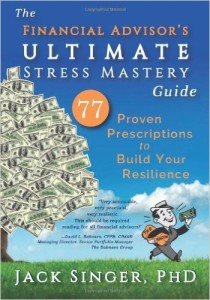
Workplace wellness programs have now been shown to dramatically reduce such costs as absenteeism and insurance claims and increase the quality and amount of production. Many companies recognize the importance of having ongoing programs that address the physical and psychological wellness that comes from making workplaces safe, reducing job stress, raising employee morale, recognizing employee accomplishments, etc.
The American Psychological Association’s Center for Organizational Excellence presents awards each year to companies that satisfy a series of rigorous criteria to be recognized in their “Good Company” series. Companies are judged on a variety of workplace safety, health and wellness criteria, including leadership & management, the physical and mental health of employees, healthy working environments and healthy organizations.
However, HR professionals pleading the case for bringing such wellness programs to their companies often fall on deaf ears because those holding the purse strings look at these programs as “soft” and not affecting their bottom line.
Finally, Proof that Wellness Programs Impact the Bottom Line
In three separate studies published by the Journal of Occupational and Environmental Medicine, it has been shown that companies that emphasize employee wellness are fiscally healthier, as well. This benefit should interest every wealth management professional.
Investments In Companies With Healthy Workplaces
All three studies looked for publically traded companies with robust, comprehensive workplace wellness programs. These publically traded companies either won awards for their wellness programs or satisfied rigorous criteria for programs that promote employee health.
Hypothetical portfolios of these companies were created, with the researchers making a simulated investment. In the three separate studies, each of the companies had to meet separate criteria for healthy wellness employee programs, and the simulated portfolios were followed for 14, 14 and six years, respectively.
Healthy Companies Significantly Outperform The S&P 500!
In all three studies, the portfolio of employee wellness-oriented companies significantly outperformed the S&P!
One group of companies outperformed the S&P by an average of 13 percent per year, a second group averaged 15 percent superiority per year, and the third group averaged 8 percent superior performance per year.
What Does This Mean For Wealth Management Advisors?
Obviously, when corporations embrace the core values of promoting employee health and well-being, the benefits go far beyond the health and well-being of their workforces. The financial health of these companies seems to be impacted as well.
A growing body of research suggests a financial benefit of investing in the health of employees. One of the authors, Paul Terry, Ph.D., president and CEO of the HERO Scorecard, one of the organizations that rates the wellness programs of companies, cites a “compelling correlation between companies that deliver strong financial returns and those that have documented, best-practice wellness programs. This knowledge can benefit business leaders looking for a competitive edge, and investors looking for a sound investment.”
Indeed, there may come a day when companies recognized for embracing healthy workplace wellness programs will be one of the criteria that signals a buy recommendation for Wall Street investors.
And, advisors, how does your own firm embrace employee wellness?
By Dr Jack Singer, author of “The Financial Advisor’s Ultimate Stress Mastery Guide”
From: Financial Advisor

